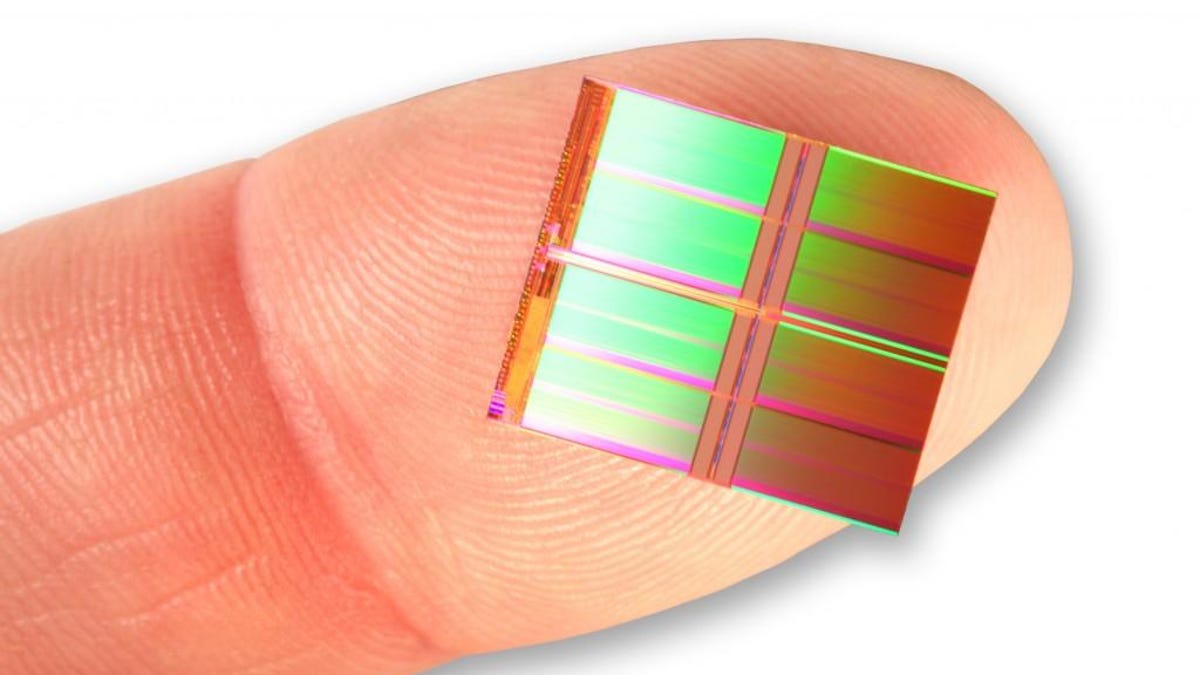Intel promises bigger, cheaper SSDs for your computer
The chipmaker plans to squeeze more storage into of each cell of flash memory.

An Intel flash memory chip
Solid state drives are way faster than traditional hard drives for storing data on laptops , but they still can't match the old technology when it comes to cost and capacity. But Intel promises to help improve SSDs with new technology that squeezes more data into each memory cell.
SSDs use flash memory, a type of chip that stores data in tiny memory cells. When flash memory first arrived, each cell could store a zero or a one -- a single bit. But improvements have increased that to two bits, three bits, and now today, four bits, so a single cell can store 16 bits of data -- a major capacity boost.
But Intel on Wednesday announced new technology is in the works that will double that data density again -- five-level cells.
"Five-level cells would further increase density and reduce the cost beyond quad-level cells," said Frank Hady, an Intel fellow from the chipmaker's Non-Volatile Memory Solutions Group.
The move is important, but don't expect Intel to stand alone. For example, another flash memory leader, Toshiba, revealed its own 5-level cell flash memory technology in August. The bottom line: expect the competition and innovation to drive down storage prices for the PC, phone or other digital doodad you buy a couple years from now.
Intel says it's working on doubling its flash memory storage density by squeezing five bits of data into each memory cell.
Intel didn't say when the new technology would be commercialized or how it'll affect costs. "We are conducting feasibility studies today," the company said in a statement.
Flash memory chipmakers have also been increasing capacity with 3D stacking technology that adds dozens of layers of flash memory cells. Intel's 2019 flash memory stacks up 96 layers of quad-level cells, but in 2020, it'll move to 144 layers, the company announced.

